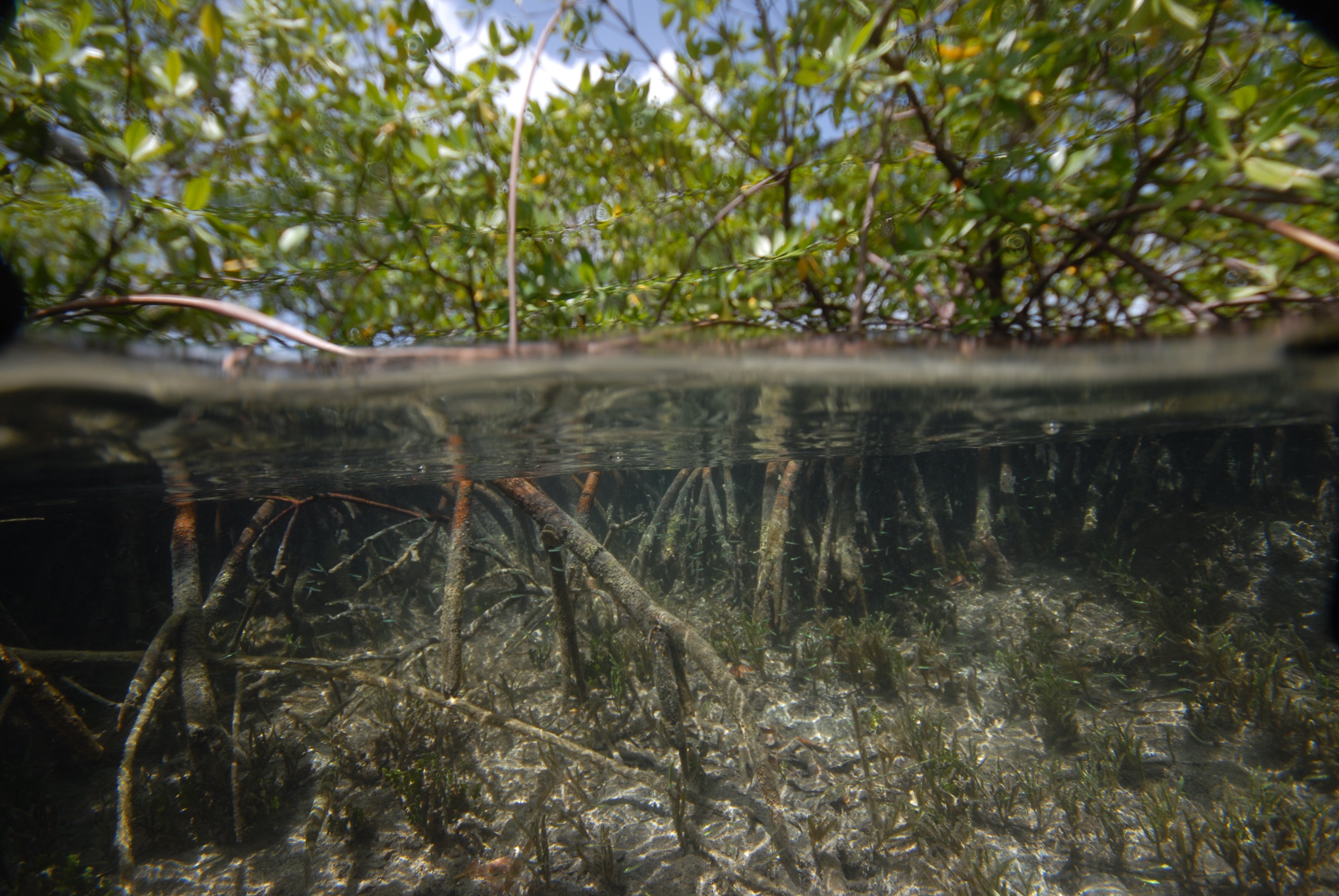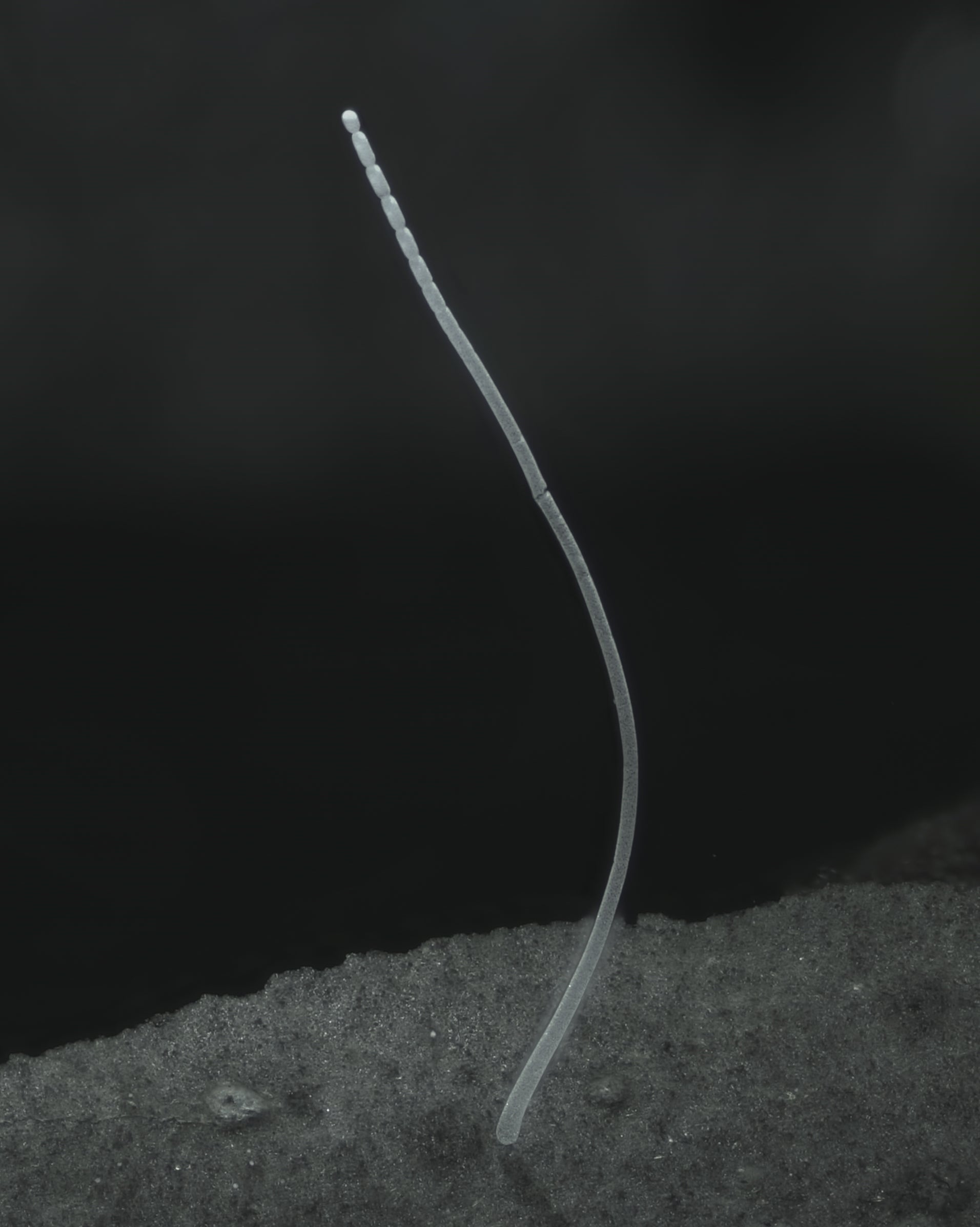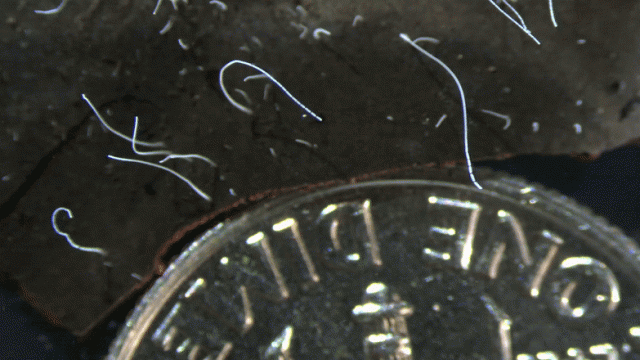A team of scientists discovered a macroscopic species of bacterium living in the waters off Guadeloupe in the Caribbean, shifting the scales of how big we thought bacteria could be. The newly discovered species is named Thiomargarita (sulphur pearl) magnifica, and it is so large that its single cells are visible to the naked eye.
Besides its superlative size, T. magnifica shows signs of increased complexity in bacteria. Instead of its DNA just floating around in the cell, its genetic information is tucked away within membrane-bound structures, as ours is. A full analysis of the newly described bacteria is published today in Science.
“The bacteria that we discovered has roughly the shape and size of an eyelash, and yet it is a single bacterial cell,” said study lead author Jean-Marie Volland, a marine biologist at Lawrence Berkeley National Laboratory and the Laboratory for Research in Complex Systems, in a press conference Monday.
“These bacteria are about 5,000 times larger than most bacteria,” Volland added. “To put things into perspective, it is the equivalent for us humans to encounter another human who would be as tall as Mount Everest.”
The gargantuan bacterium was first found in 2009 in the marine mangrove swamps of Guadeloupe, an island in the Lesser Antilles, by study co-author Olivier Gros, a biologist at the Université des Antilles. T. magnifica appeared to be translucent, centimeter-long strings clinging to decaying leaf matter in the water. At first, Gros thought the white filaments were eukaryotes, due to their size.

But bringing some samples back to the lab and putting them under a microscope revealed that they had no nuclei or mitochondria — typical components of eukaryotic cells. Instead Gros found sulphur granules inside; “it looked more like a large filamentous sulphur-oxidizing bacteria, with the difference that it did not seem to be multicellular,” Gros said in the press conference.
T. magnifica’s genetic information is stored in a series of vesicles called pepins, which are strung along the creature’s length. In a related Perspectives article, Petra Anne Levin, a microbial biologist at Washington University in St. Louis, who is unaffiliated with the new research, said that it’s a mystery how a bacterium as big as T. magnifica manages to coordinate its growth and development.

The research team sequenced and analysed the genome of T. magnifica and revealed how the bacterium reproduces: one end of the elongated bacterium constricts, splitting the T. magnifica cell in two. The genomic analysis showed that the bacterium has a lengthy genome — about 12 million base pairs, around twice the length of some related bacterial genomes.
The true habitat range of T. magnifica is unknown. So far, it’s only been found in a couple of sites in Guadeloupe’s mangrove swamps. Its exact role in the ecosystem is still uncertain.
“Mangroves and their microbiomes are important ecosystems for carbon cycling,” said study co-author Tanja Woyke, a geneticist at Lawrence Berkeley National Laboratory’s Joint Genome Institute, in a laboratory release. “If you look at the space that they occupy on a global scale, it’s less than 1% of the coastal area worldwide. But when you then look at carbon storage, you’ll find that they contribute 10-15% of the carbon stored in coastal sediments.”
Gros mentioned in the Monday press conference that, in the last couple of months, no T. magnifica have been present, so there may be some seasonality to their activity. But its presence in the first place is an indicator that there’s more to come in the realm of big bacteria.
“More philosophical in nature is the question of whether T. magnifica represents the upper limit of bacterial cell size,” Levin added. “It seems unlikely, and, as the study of Volland et al. illustrates, bacteria are endlessly adaptable and always surprising — and should never be underestimated.”
Of course, ‘microbe’ doesn’t really apply in T. magnifica’s case. Depending on how many more massive bacteria are found, we may have to start considering the term ‘macrobe.’
More: The Mites That Live and Breed on Your Face Have Anuses, Genome Study Finds
